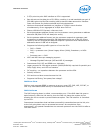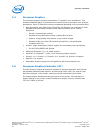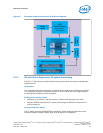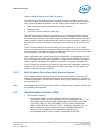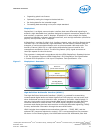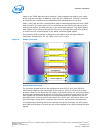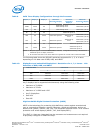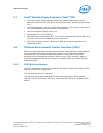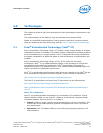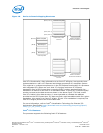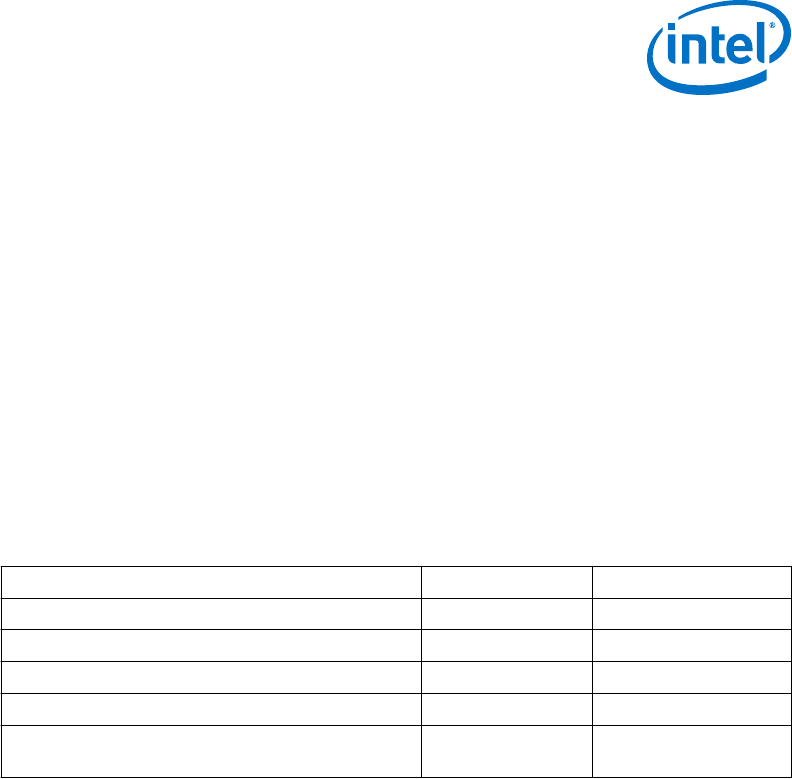
embedded DisplayPort*
embedded DisplayPort* (eDP*) is an embedded version of the DisplayPort standard
oriented towards applications such as notebook and All-In-One PCs. Digital Port D can
be configured as eDP. Like DisplayPort, embedded DisplayPort also consists of a Main
Link, Auxiliary channel, and an optional Hot-Plug Detect signal.
The eDP on the processor can be configured for 2 or 4 lanes.
The processor supports embedded DisplayPort* (eDP*) Standard Version 1.2 and
VESA embedded DisplayPort* Standard Version 1.2.
Integrated Audio
• HDMI and display port interfaces carry audio along with video.
• Processor supports two DMA controllers to output two High Definition audio
streams on two digital ports simultaneously.
• Supports only the internal HDMI and DP CODECs.
Table 8. Processor Supported Audio Formats over HDMI*and DisplayPort*
Audio Formats HDMI* DisplayPort*
AC-3 Dolby* Digital Yes Yes
Dolby Digital Plus Yes Yes
DTS-HD* Yes Yes
LPCM, 192 kHz/24 bit, 8 Channel Yes Yes
Dolby TrueHD, DTS-HD Master Audio*
(Lossless Blu-Ray Disc* Audio Format)
Yes Yes
The processor will continue to support Silent stream. Silent stream is an integrated
audio feature that enables short audio streams, such as system events to be heard
over the HDMI and DisplayPort monitors. The processor supports silent streams over
the HDMI and DisplayPort interfaces at 44.1 kHz, 48 kHz, 88.2 kHz, 96 kHz,
176.4 kHz, and 192 kHz sampling rates.
Multiple Display Configurations
The following multiple display configuration modes are supported (with appropriate
driver software):
• Single Display is a mode with one display port activated to display the output to
one display device.
• Intel Display Clone is a mode with up to three display ports activated to drive the
display content of same color depth setting but potentially different refresh rate
and resolution settings to all the active display devices connected.
• Extended Desktop is a mode with up to three display ports activated to drive the
content with potentially different color depth, refresh rate, and resolution settings
on each of the active display devices connected.
The digital ports on the processor can be configured to support DisplayPort*/HDMI/
DVI. For Desktop designs, digital port D can be configured as eDPx4 in addition to
dedicated x2 port for Intel FDI for VGA. The following table shows examples of valid
three display configurations through the processor.
Interfaces—Processor
Desktop 4th Generation Intel
®
Core
™
Processor Family, Desktop Intel
®
Pentium
®
Processor Family, and Desktop Intel
®
Celeron
®
Processor Family
December 2013 Datasheet – Volume 1 of 2
Order No.: 328897-004 35



